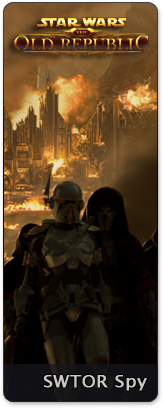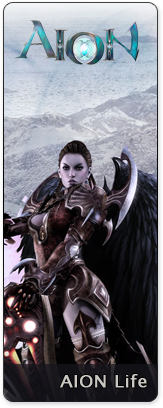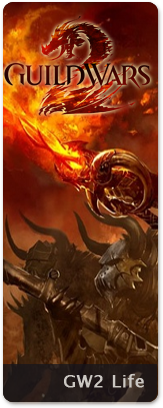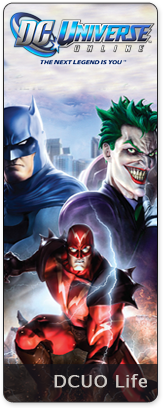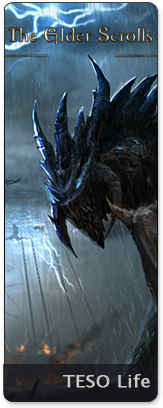Mar 06 2009
Creating the Polluted World of Hutta
Pop quiz: If you had the chance to contribute one thing to a game like Star Wars™: The Old Republic™, would it be A) a new Rancor design, B) a quest for constructing your first Lightsaber, C) new Sith Force powers, or D) six paintings of mud? If you said “D”, you might be an environment artist or have low self-esteem!
[PSGallery=bcpw6jcpe]
Luckily for us environment artists, Star Wars™ has an almost limitless supply of amazing planets and environments to get excited about. It’s hard not to get excited when it sinks in that you’re working on an icon like Korriban. Of course, for a well-known planet like Korriban visual reference is abundant — we all know what it should look like. But what happens when the designers want to create a planet nobody’s ever seen before (is that even possible)?
That turned out to be the case with Hutta (aka Nal Hutta) when we started production. In fact, the Wookieepedia entry for Hutta now uses an early screenshot from The Old Republic as the only image available. Hutta is the home world of the Hutts, which you may recall as the incredibly notorious species of slimy crime lords from the movies, and is integral to various class stories in The Old Republic.
So how does one create a never-before-seen environment in the Star Wars universe? Where would you find reference for an appropriately vast swamp? Start with photos of Florida.
Environment art lives and dies on the quality of its reference. For most environments, artists will find as many reference images as possible from the movies, art books or production images and cherry-pick the best elements to emulate in the game. Next, the concept artists are let out of their cages long enough to produce some amazing concept images of mood, lighting and important points of interest specific to the areas that we will work on.
When we began work on Hutta, we knew it was supposed to be a polluted, filthy sewer of a planet, just like the Hutts would like it. Without any movie reference, we gathered a wide variety of real life photos of swamps and wetlands, taking note of common themes and basic shapes that come up again and again, like hanging moss, thin trees and ankle-deep water. We complimented this with a collection of images from industrial sites, construction zones and junk yards. Now that we know what this dump is supposed to look like we’re ready to start!
When a planet is shiny and new, artists start with a “gold standard” area. We single out a small test area of the planet and add new textures, plants and props, making changes as we go. This makes sure that everything looks good before we spend the time to rinse and repeat the process across the rest of the terrain.
- The first piece of real work involves identifying the types of terrain we want the player to trek across and create hand-painted textures for these, hence the “paintings of mud”. In the case of Hutta we needed to have some appallingly polluted areas, some dry, packed-down mud for paths and some terrain that is overgrown with rotting vegetation. It’s not uncommon to end up with over a dozen textures just for terrain.
- Next up is flora and other natural props, like rocks and tree stumps. When designing vegetation we often create a lineup of sketches of each plant and prop in relation to the character’s size. We want to make sure that we get a wide range of widths and heights. Without planning ahead on a flora-dense planet like Hutta it’s easy to end up with all your vegetation getting lost within each other. Unacceptable!
- The last part of creating the gold standard area involves fiddling with sliders, engine settings and color ramps to fine-tune the global light color, light angle, fog, shadows and sky. These settings will affect the look of all outdoor areas of the planet. Fortunately, our engine allows us to update all these things on the fly, so we see the effect of adjustments as we make them. Often, all of these pre-production steps will be in development simultaneously, assigned to multiple artists.
We now have a working, playable environment with finished terrain, props and global settings and are usually walking around the office patting each other on the back and handing out cigars. At this point the Lead Environment Artist and Art Director come over and slap the cigars out of hands with some constructive suggestions and changes. We all get back to work. After a round or two of feedback we’re ready to move to the next stage.
So far, environment art is still confined to our very small test area. It’s now time to venture out into the bleak world of designer block-in terrain! By the time we have begun art on a planet, world builders have already laid out the rough shape of the terrain for gameplay testing purposes using flat textures and boxes to represent buildings or props.
What this means is that we’ll be replacing and reshaping the rough terrain to look good, er… better. Hutta provided some unique challenges. For example, while swamps are naturally flat, this would make for some dull gameplay. However, having steep hills of swamp muck doesn’t make much sense. To solve the problem we created a set of large metal shoring props that became essential to “shoving” mud to the side in piles to create paths of different heights. The end result is corroded metal walls with swamp muck oozing out from the cracks – fitting imagery for Hutta.
We also knew that Hutta couldn’t just be a swamp; it had to convey a swamp that had suffered from heavy industrialization. To accomplish this we built a variety of modular pipes and refinery equipment that could be mixed and matched and then spread throughout the planet, snaking in and out of the corrosive sludge as though the planet were being held together by a network of metal and mud.
As we refine terrain, other artists provide large assets such as buildings, wall sets and large props like generators and smoke stacks. Because we don’t have finished buildings when we start a planet, forward planning and careful scheduling is essential. On the bright side, as the last assets begin to roll in, we can finish up the final polish like adding lights to interiors and various particle effects.
There are always a thousand little fixes and adjustments to make but eventually we have to put a planet to rest. Depending on the sheer amount of playable terrain, a team of three or four environment artists can take, on average, four to eight months to finish a planet. Once reviewed again by management we can get the final thumbs up.
Then we’ll start the process all over again.
Alex Thomas
Senior Environment Artist
Comments Off on Creating the Polluted World of Hutta

